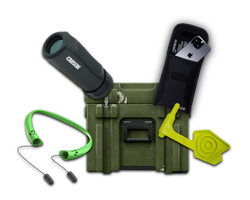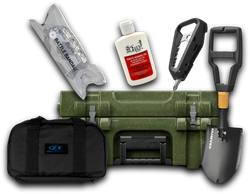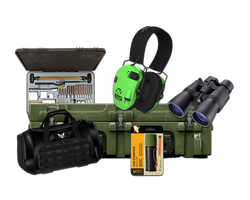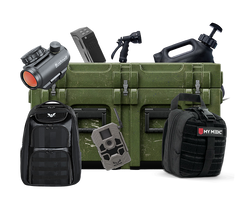How Long Does a Sleeping Bag Last? Understanding Lifespan, Care, and Quality
Table of Contents
- Introduction
- Understanding Sleeping Bag Lifespans
- Types of Insulation and Their Implications
- Practical Care Tips for Sleeping Bags
- The Impact of Usage on Longevity
- Conclusion
When planning outdoor adventures, a reliable sleeping bag is an essential piece of gear. Whether you're a casual camper or a seasoned backpacker, the question of longevity often arises: how long does a sleeping bag last? The lifespan of a sleeping bag can vary significantly based on several factors, including its insulation type, usage frequency, and maintenance practices. In this blog post, we will delve into the expected lifespan of different sleeping bags, the factors affecting their longevity, and essential care tips to ensure your gear remains functional for years to come.
Introduction
Imagine this: You've set up camp after a long day of hiking, and as you crawl into your sleeping bag, you can't help but wonder if it will keep you warm through the night. A crucial element in outdoor gear, sleeping bags are often overlooked in terms of longevity and maintenance. Yet, understanding how long a sleeping bag lasts—and what influences that duration—can make all the difference in your comfort and preparedness.
A properly cared-for sleeping bag can last for years, even decades. However, many outdoor enthusiasts find themselves questioning the durability of their gear, especially when faced with changing temperatures and demanding conditions. This blog post aims to educate readers on the lifespan of sleeping bags, the differences between down and synthetic insulation, and practical tips for extending the life of your sleeping gear.
By the end of this article, you'll have a comprehensive understanding of how long sleeping bags last, how to care for them, and the best practices for ensuring your gear remains in top condition. Let's dive into the world of sleeping bags to uncover what determines their lifespan and how to maximize your investment.
Understanding Sleeping Bag Lifespans
1. Average Lifespan of Sleeping Bags
The lifespan of a sleeping bag can generally be categorized based on the type of insulation used:
-
Down Sleeping Bags: High-quality down sleeping bags can last anywhere from 10 to 50 years with proper care. Although most down bags are expected to provide reliable insulation for about 10-15 years under regular use, many users have reported their down bags remaining functional for decades. The key to longevity lies in maintaining the loft of the down insulation and avoiding excessive compression during storage.
-
Synthetic Sleeping Bags: Synthetic bags typically have a shorter lifespan, averaging 3 to 5 years. While some may last longer, they generally do not retain their insulating properties as effectively as down. Synthetic materials tend to lose loft and warmth more quickly due to compression and exposure to moisture.
2. Factors Affecting Lifespan
Several factors play a role in determining how long a sleeping bag will last:
-
Frequency of Use: The more frequently you use your sleeping bag, the faster it will wear out. For example, sleeping in a bag every night can lead to a significantly shorter lifespan compared to occasional weekend camping trips.
-
Material Quality: The quality of materials used in the construction of the sleeping bag can greatly impact its durability. Higher fill power down and robust synthetic fibers tend to last longer than lower-quality alternatives.
-
Care and Maintenance: Proper care is crucial for prolonging the life of your sleeping bag. Regular cleaning, correct storage, and careful handling can make a substantial difference in how long your bag stays functional.
-
Environmental Conditions: Exposure to moisture, extreme temperatures, and rough handling can degrade the materials used in sleeping bags, affecting their performance over time.
Types of Insulation and Their Implications
1. Down Insulation
Down insulation, sourced from the soft feathers of ducks or geese, is known for its exceptional warmth-to-weight ratio. Here are some key points to consider regarding down sleeping bags:
-
Longevity: As mentioned, high-quality down sleeping bags can last decades with proper care. Many users report bags lasting 20-30 years or more, especially when they are maintained correctly.
-
Care: Down sleeping bags require special attention to avoid clumping and loss of loft. To clean, use a gentle down-specific detergent and follow the manufacturer's instructions for washing and drying.
-
Storage: Store down bags uncompressed in a cool, dry place, ideally in a storage sack or loosely in a large container. Avoid leaving them stuffed in a stuff sack for extended periods, as this can compress the insulation and affect its ability to fluff up.
2. Synthetic Insulation
Synthetic sleeping bags utilize man-made fibers, which provide decent insulation even when wet. However, they do come with some trade-offs:
-
Longevity: Synthetic bags generally last 3-5 years but can show signs of wear sooner if used extensively. They may not retain their warmth as effectively after repeated washes.
-
Care: Synthetic bags are easier to care for than down. They can usually be machine-washed and dried without special considerations, but it's still essential to follow care instructions to maintain their performance.
-
Storage: Similar to down bags, synthetic bags should be stored uncompressed to maintain loft. However, they may be more forgiving than down when it comes to storage conditions.
Practical Care Tips for Sleeping Bags
Proper care can significantly extend the lifespan of your sleeping bag. Here are some essential tips:
1. Cleaning Your Sleeping Bag
-
Frequency: Clean your sleeping bag only when necessary—look for signs of dirt, odor, or loss of loft. For down bags, washing every few years is often sufficient, while synthetic bags might require more frequent washing.
-
Method: For down bags, use a front-loading washing machine with a gentle cycle and a down-specific detergent. For synthetic bags, similar precautions apply, but they can often tolerate more aggressive washing methods.
-
Drying: Dry your sleeping bag thoroughly, preferably in a large, commercial dryer set to low heat. Adding a few tennis balls can help break up clumps of insulation and restore loft.
2. Storage Practices
-
Avoid Compression: Always store your sleeping bag uncompressed in a cool, dry place. If possible, use a storage sack designed for this purpose, which allows the bag to retain its shape and loft.
-
Avoid Moisture: Ensure your sleeping bag is completely dry before storing it. Moisture can lead to mold and mildew, which can deteriorate the materials.
3. Repairs and Maintenance
-
Minor Repairs: Small tears or snags can often be repaired with duct tape or specialized repair tape like Tenacious Tape. This can help prolong the life of your sleeping bag.
-
Professional Care: If your sleeping bag shows significant signs of wear or requires extensive cleaning, consider using a professional service specializing in down care.
The Impact of Usage on Longevity
1. Regular Use vs. Occasional Use
The frequency of use directly affects how long a sleeping bag will last. For example, a bag used frequently in rigorous conditions—such as winter mountaineering—will experience more wear and tear compared to one that is used occasionally for weekend camping trips.
2. Care During Use
During outings, take steps to minimize wear on your sleeping bag:
-
Use Liners: Consider using a sleeping bag liner to minimize direct contact between your skin and the bag. This helps keep it clean and reduces the need for frequent washing.
-
Air It Out: Whenever possible, air out your sleeping bag during breaks to prevent moisture buildup from sweat.
-
Avoid Food and Drink: Be cautious when eating or drinking near your sleeping bag to avoid stains and odors.
Conclusion
In conclusion, the lifespan of a sleeping bag can vary widely based on its insulation type, usage frequency, and care practices. High-quality down bags can last several decades with proper maintenance, while synthetic bags typically have a shorter lifespan. By understanding the factors that contribute to the longevity of your sleeping bag and implementing best care practices, you can ensure your gear remains functional and reliable for many outdoor adventures to come.
Before heading out on your next trip, take a moment to assess the condition of your sleeping bag. Is it time for a wash, or does it need a minor repair? Perhaps you’re considering an upgrade? If you're looking for high-quality sleeping bags and other tactical gear, check out the Crate Club Shop for options that suit your needs.
FAQ
Q: How often should I wash my sleeping bag?
A: It depends on usage. For down bags, every few years is often sufficient, while synthetic bags may require more frequent washing, especially after extensive use.
Q: Can I dry clean my down sleeping bag?
A: No, dry cleaning can strip the natural oils from the down and ruin its insulation properties. Stick to washing with down-specific detergents.
Q: How can I tell if my sleeping bag needs to be replaced?
A: Signs include significant loss of loft, persistent odors despite cleaning, or damage that cannot be repaired. If it no longer keeps you warm, it may be time for a new one.
Q: Can I store my sleeping bag in a stuff sack?
A: It's best to avoid long-term storage in a stuff sack. Store it uncompressed in a cool, dry place to maintain loft and insulation.
Q: What should I do if my sleeping bag gets wet?
A: Dry it thoroughly before storage and avoid storing it damp to prevent mold and mildew.
By following these guidelines and understanding the intricacies of your sleeping bag, you can ensure it remains a reliable companion on your outdoor adventures for years to come. Remember, investing in quality gear and maintaining it diligently is key to effective preparedness and enjoyment in the great outdoors.
Share this article



